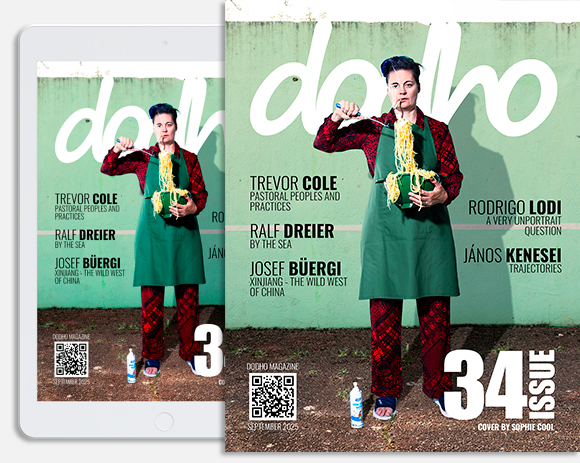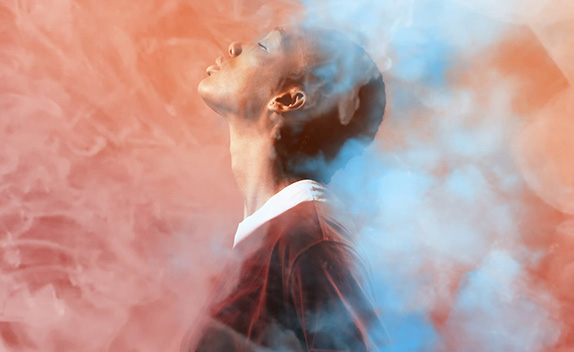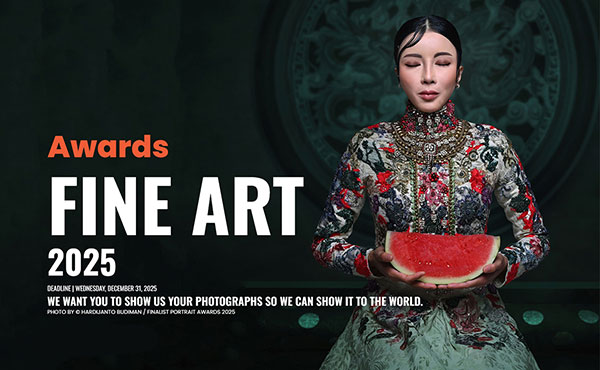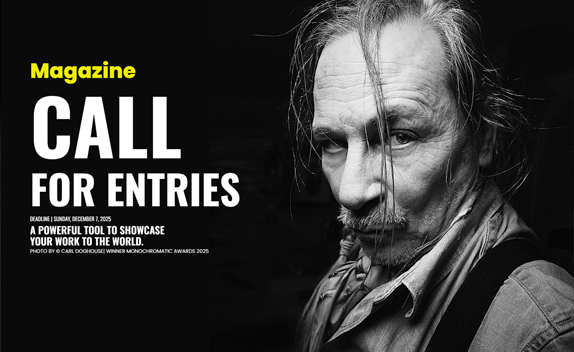Bruce Davidson was never interested in the easy picture. He wanted the one that cost time and conversation, the one that asked the photographer to stay when common sense whispered to leave.
Born in 1933 in Oak Park Illinois, Davidson grew up in a country that kept its discomforts out of the postcards.
He sensed early that photography could pull hidden stories into daylight. At ten he borrowed his mother’s Kodak Brownie and discovered that framing the world felt like holding a secret map. While other children collected baseball cards he collected moments. By high school he was developing film in the family basement, trading chores for chemicals, and reading any magazine that published black and white images. When he saw the work of Cartier Bresson he understood that patience could transform chance into design.
After studying at the Rochester Institute of Technology and briefly serving in the Army Signal Corps, Davidson headed to New York because great subjects rarely travel to meet the photographer. The city in the late fifties was raw and restless, still rubbing its eyes after war prosperity, bracing for civil rights battles, pulsing with jazz and neon. Davidson knocked on the door of Magnum Photos with a portfolio about circus performers that he had shot while stationed near Wiesbaden. The images showed acrobats during rehearsal, clowns smoking in tents, trapeze artists sewing calluses in silence. They were not showtime pictures, they were backstage confessions. Magnum saw in those frames exactly what the agency valued: curiosity without voyeurism. At twenty five he became one of its youngest members.
His first major American project unfolded in Brooklyn. While riding the subway he noticed young men with jackets embroidered with crowns and daggers. They were members of the Jokers, a teenage gang that ruled a wedge of South Brooklyn. Davidson asked if he could photograph them. They laughed, then shrugged, then let him follow them from rooftops to pool halls for eleven months. He learned their slang, listened to their boasts, witnessed their insecurity when no rivals watched. The resulting series titled Brooklyn Gang published in Life magazine in nineteen fifty nine revealed adolescence as a mixture of bored tenderness and sudden menace. The public expected menace alone. Davidson delivered nuance. A girl combing her hair in a mirror while a boy smokes behind her, a teenager drinking cola in Coney Island looking both tough and lost, two rival boys shaking hands because the photographer asked and they felt momentarily larger than fear. Viewers recognized their own youth in the faces of kids society labeled delinquent. The photos argued for empathy without preaching a single sentence.
Empathy became Davidson’s trademark. In nineteen sixty one he drove south to photograph the Freedom Riders. News outlets focused on burning buses and violent mobs. Davidson placed himself inside the buses. He shared the heat, the exhaustion, the gospel singing that steadied nerves between checkpoints. His portraits show young activists with eyes rimmed by nights of no sleep, clergy members clutching papers that detailed bail amounts, local supporters fixing sandwiches in homes where curtains were never fully closed. When segregationists attacked a bus in Alabama Davidson ducked stones yet kept shooting. The camera shielded nothing but it bore witness. Those images circulated worldwide and gave faces to courage that official speeches sometimes reduced to numbers.
During the mid sixties Davidson shifted to Chicago where housing discrimination bred frustration. He spent two years visiting a single block on the city’s near West Side. Residents called it The Block because it was their whole world. Police patrols were scarce, playgrounds cracked, hope flickered. Davidson arrived with a Rolleiflex and a willingness to wait. He drank coffee with mothers, played marbles with children, accepted teasing from teenagers who thought art was a fancy word for nothing. Over months he became a harmless presence, then an ally. The photographs reveal daily dignity: a boy flying a plastic bag kite above trash fires, a woman adjusting a wig in a broken mirror before church, neighbors crowding a stoop on a humid evening to share jokes that never reached the newspapers. When the series appeared in nineteen sixty six, readers encountered poverty devoid of cliché. Critics praised the lyrical style though Davidson preferred to call it honest.
Honesty required endurance and sometimes obsession. In nineteen sixty nine he began photographing the New York subway, a project that would stretch over a decade. He rode trains at every hour, carrying three Leicas loaded with color slide film because graffiti demanded more than grayscale. The cars were canvases of aerosol names, the windows scratched into hieroglyphs, the passengers a rotating cast of fatigue, flirtation, menace, daydream. Davidson sat with camera at hip level, letting rhythm and instinct dictate when to raise it. He was mugged twice, threatened often, yet persisted because the subway felt like a moving theatre where race, class, and urban myth collided. The resulting book Subway published in nineteen eighty six glows with saturated reds, acid yellows, and deep blues, lit by fluorescent tubes that turned every carriage into a futuristic cave. A man in a three piece suit stands under a mural of bubble letters looking both regal and trapped. A couple in carnival masks ride home from a Halloween party, their costumes at odds with the weary faces around them. Two teenagers share headphones, oblivious to the knife scar on the pillar behind them. Painting and cinema critics claimed the series predicted cyberpunk aesthetics. Davidson said he just photographed New York as it was.
While color granted vibrancy, Davidson never abandoned black and white. For the Central Park project he used both. From nineteen ninety two to ninety five he strolled the park daily, following joggers, skaters, sunbathers, chess players, homeless sleepers, bird watchers. The park was a green lung in a city choking on crime statistics. Davidson’s lens revealed small rescues: a father teaching a daughter to ride a bike, an elderly couple dancing to a lone saxophonist, teenagers practicing breakdance on cardboard. Shadows spilled across lawns, light bounced off reservoirs. The series felt like an exhale after decades of turbulence. It reminded audiences that public space can host collective relief.
Each Davidson project shares common ingredients. He commits to time rather than spectacle. He studies the rhythm of a place, then lets intuition steer. He talks little but listens intensely. He prints carefully, choosing tones that respect atmosphere. He dislikes cropping; he frames deliberately. He works in sequences, believing that truth resides between images. One portrait may charm, a second may disturb, the set together explains contradiction.
Despite accolades including a Guggenheim Fellowship, two Robert Capa Gold Medals, and a National Medal of Arts, Davidson remains modest. He credits subjects for trusting him and editors for believing in long term work. He speaks softly at lectures, showing contact sheets to illustrate that even masters miss more shots than they keep. He tells students to find a story that matters to them personally because passion withstands boredom and rejection. He advises learning to wait until people forget the camera exists.
Technology shifted around him. Medium format yielded to thirty five millimetre, silver halide gave way to digital sensors. Davidson embraced new tools only when they served old goals. He now prints archival pigment but still studies the tonal range like he once judged darkroom enlargements. He insists that megapixels never substitute for commitment. If you will not spend a summer on one block, he says, no equipment can save the work.
Critics often compare Davidson to Walker Evans and Roy DeCarava, yet his blend of intimacy and social inquiry is singular. Evans kept emotional distance; Davidson steps closer. DeCarava bathed scenes in lyrical shadow; Davidson lets gritty light reveal every pockmark. Mary Ellen Mark called him a poet of persistence. Gordon Parks admired his capacity to disappear among subjects.
Disappearing did not mean erasing self. Davidson’s photographs carry a moral stance. He positions the camera at eye level because he wants equality within the frame. He rarely tilts down on children or up at authority. Perspective is respect. When shooting in troubled neighborhoods he declined accompanying police rides because he feared becoming an arm of surveillance. He walked instead, slower, riskier, but humbler.
The risk delivered insight. In Spanish Harlem he photographed a mother cradling a newborn against graffiti that spelled love in crooked letters. In Selma he captured a trooper gripping a shotgun opposite marchers whose clasped hands looked fragile but steady. In Los Angeles he portrayed actors in costumes between takes exposing fatigue behind glamour. Always he sought the in-between.
That in-between lives in his prints, which museums across the world now preserve. MoMA acquired Brooklyn Gang early. Tate houses Subway. The National Portrait Gallery in Washington exhibits his civil rights work. Collectors value vintage prints but Davidson cares more about public accessibility. He donates sets to libraries where teenagers can handle images without white gloves, believing tactile connection breeds empathy.
Empathy remains his motive. Approaching ninety he still carries a small camera on walks through Central Park. He photographs squirrels, tourists, and benches stained by rain. He says that the world keeps offering evidence of resilience. When asked why he continues he answers that habit and hope are hard to separate.
Bruce Davidson’s mastery lies not in a single iconic image but in his sustained gaze. He proves that documentary photography flourishes when the photographer refuses to retreat at the first click. Storytelling demands return visits, remembered names, respect for both joy and pain. His archive today is a sprawling mural of American life from mid century until yesterday. It chronicles changes in fashion, slang, housing, segregation lines, subway fares, yet the core remains constant: people longing to be seen as whole beings.
Looking at his work we recognize that the ordinary street contains epic tales. We see that the dark corners of a train car can glow with accidental color. We learn that waiting beside a stoop can reveal a community’s heartbeat. Davidson teaches these lessons without slogan. He shows and trusts viewers to feel.
In an era when images flood screens faster than they can be absorbed, Bruce Davidson invites us to slow down. His photographs reward a second glance, then a third. They carry ambient sounds and cigarette smoke, subway screech and gospel hum. They remind us that history is not just events but daily negotiations of humanity. Through one man’s patient lens we meet ourselves again and again, in different costumes, under different skies, yet with the same fragile dignity that photography at its best can honor and preserve.






